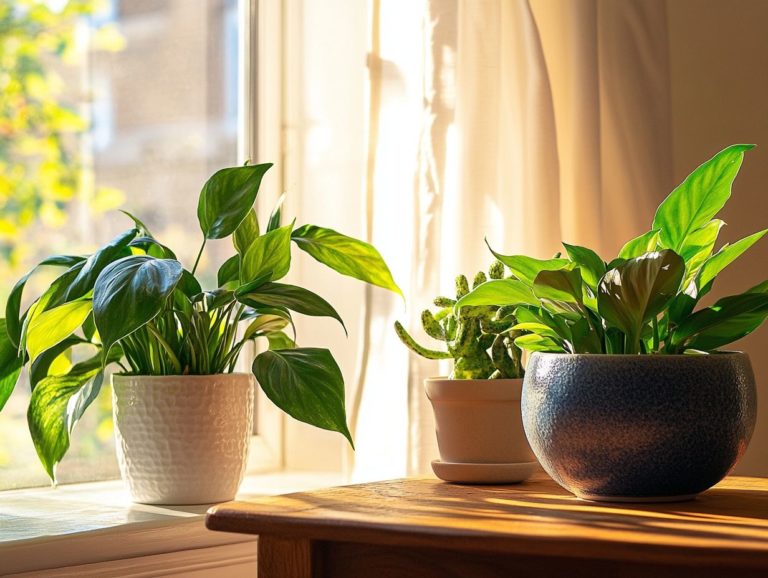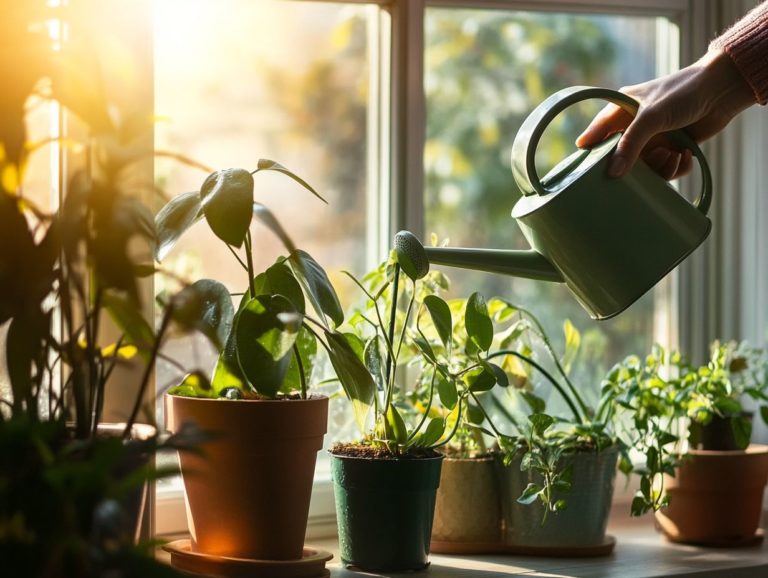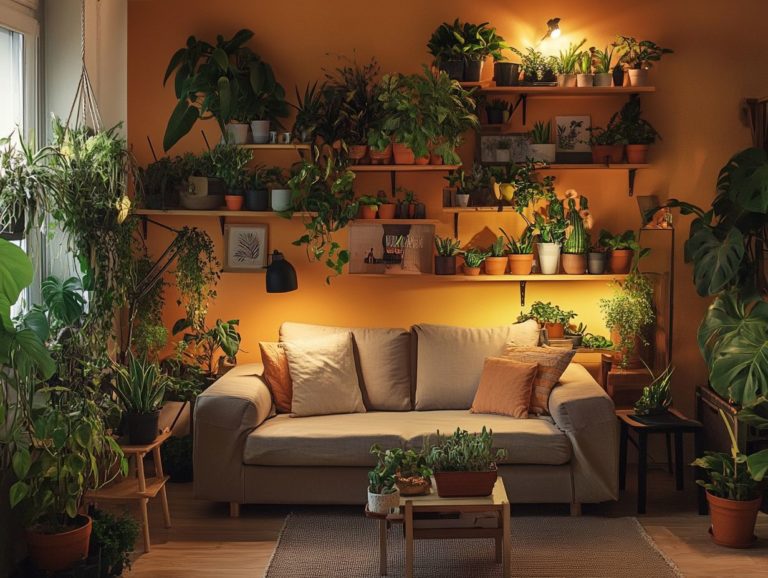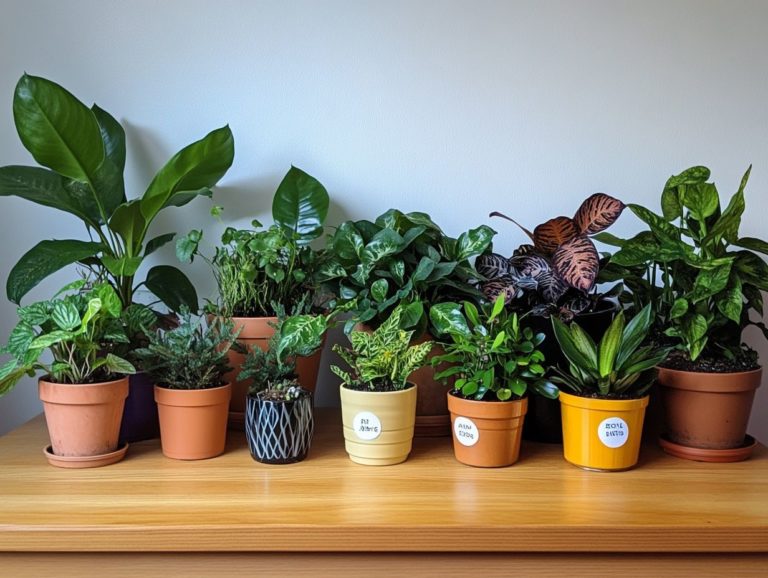What are Ideal Conditions for Indoor Plants?
Indoor plants and houseplants not only elevate the aesthetic of your space but also provide a wealth of benefits. They improve air quality and enhance your mood.
To keep your plants thriving, you need the right knowledge and care. This article delves into the key factors for nurturing healthy indoor plants, including the best light for your plants, temperature control, and ideal selections for your environment to cater to individual plant species’ needs.
It also tackles common challenges you may encounter and offers practical tips and gardening advice to maintain an ideal atmosphere. Get ready to turn your space into a vibrant indoor oasis brimming with beautiful plants!
Contents
- Key Takeaways:
- Benefits of Indoor Plants
- Factors to Consider for Indoor Plants
- Ideal Conditions for Indoor Plants
- Troubleshooting Common Issues
- Maintaining Ideal Conditions
- Frequently Asked Questions
- What are the ideal lighting conditions for indoor plants?
- What is the ideal temperature for indoor plants?
- What is the best humidity level for indoor plants?
- How often should I water my indoor plants?
- What are the ideal soil conditions for indoor plants?
- What are some signs that my indoor plant may not be in ideal conditions?
Key Takeaways:
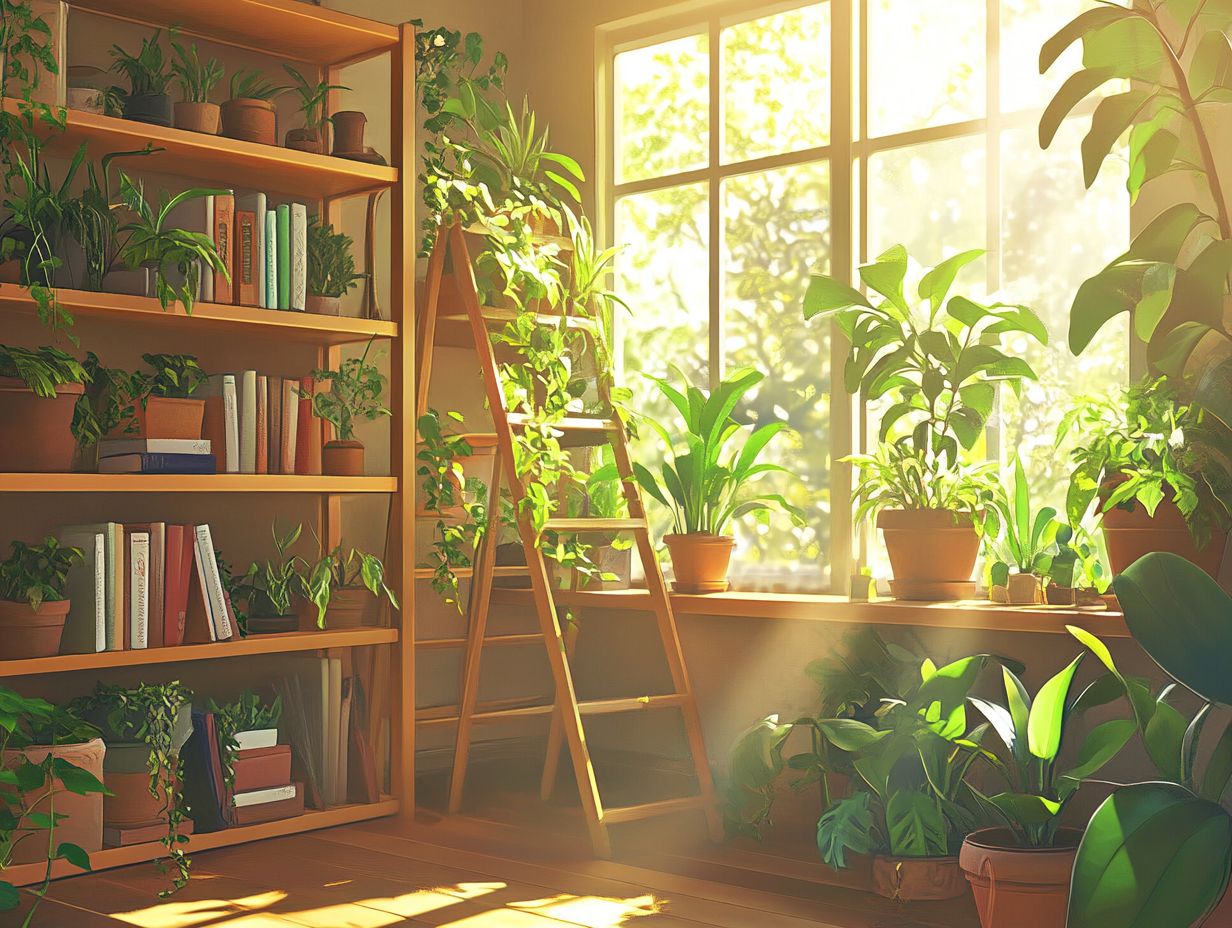
- Indoor plants and healthy houseplants improve air quality and mood, making them a beneficial addition to any space.
- Proper lighting, temperature, and plant selection are important for ideal indoor plant conditions.
- Maintaining the right light and temperature levels, along with proper watering, is crucial for healthy plants.
Benefits of Indoor Plants
Indoor plants are must-haves in modern homes. They bring beauty and charm while cleaning the air and lifting your spirits.
Research shows that houseplants can absorb toxins and boost humidity. They also improve overall well-being. By transforming your indoor environment into a verdant oasis, these plants foster healthier lifestyles by promoting effective plant care techniques and encouraging relaxation and productivity.
Their presence is invaluable, whether in your home or office, enriching your daily experience.
Improving Air Quality and Mood
Houseplants play a crucial role in enhancing indoor air quality, which directly impacts your overall mood and plant health.
Consider the Peace Lily and Snake Plant; these beauties are not just a treat for the eyes but are also effective at filtering out common household pollutants and maintaining optimal soil moisture. The Peace Lily, with its elegant white blooms, is exceptional at absorbing harmful toxins like formaldehyde while boosting humidity levels, which can help combat dry air conditions.
Meanwhile, the resilient Snake Plant and Dumb Cane stand out for their unique ability to convert carbon dioxide into oxygen during the night, further elevating air quality.
By introducing these air-purifying plants into your living spaces, you can create a healthier environment that not only cleans the air but also lifts your spirits, cultivating a serene and rejuvenating atmosphere that benefits both your indoor foliage and overall well-being.
Factors to Consider for Indoor Plants
When selecting houseplants, understanding the various factors such as light conditions and humidity requirements that influence their growth is essential for cultivating a vibrant indoor environment.
Considerations like appropriate lighting conditions, temperature control, and humidity levels tailored to each plant species’ needs play a pivotal role.
By familiarizing yourself with these requirements, you not only set the stage for successful indoor gardening but also elevate the aesthetic charm of your home.
Lighting and Temperature Requirements
Lighting and temperature are essential elements in plant care that profoundly affect the health and vibrancy of your indoor plants.
Take the Pothos, for example this low-maintenance gem thrives in various light conditions, from dim corners to bright, indirect sunlight. It’s a perfect companion for those just starting their home gardening journey.
On the other hand, if you prefer light-loving plants like succulents or cacti, they ll bask in full sunlight and need well-draining potting soil to avoid root rot.
Tropical favorites, such as the ever-popular Monstera and Ponytail Palm, prefer a warmer sanctuary, flourishing best in temperatures ranging from 65 to 85 degrees Fahrenheit. By understanding these specific needs and knowing what to look for when buying indoor plants, you promote robust growth and streamline your maintenance routine, ensuring your indoor garden stays lush and vibrant all year round.
Choosing the Right Plants
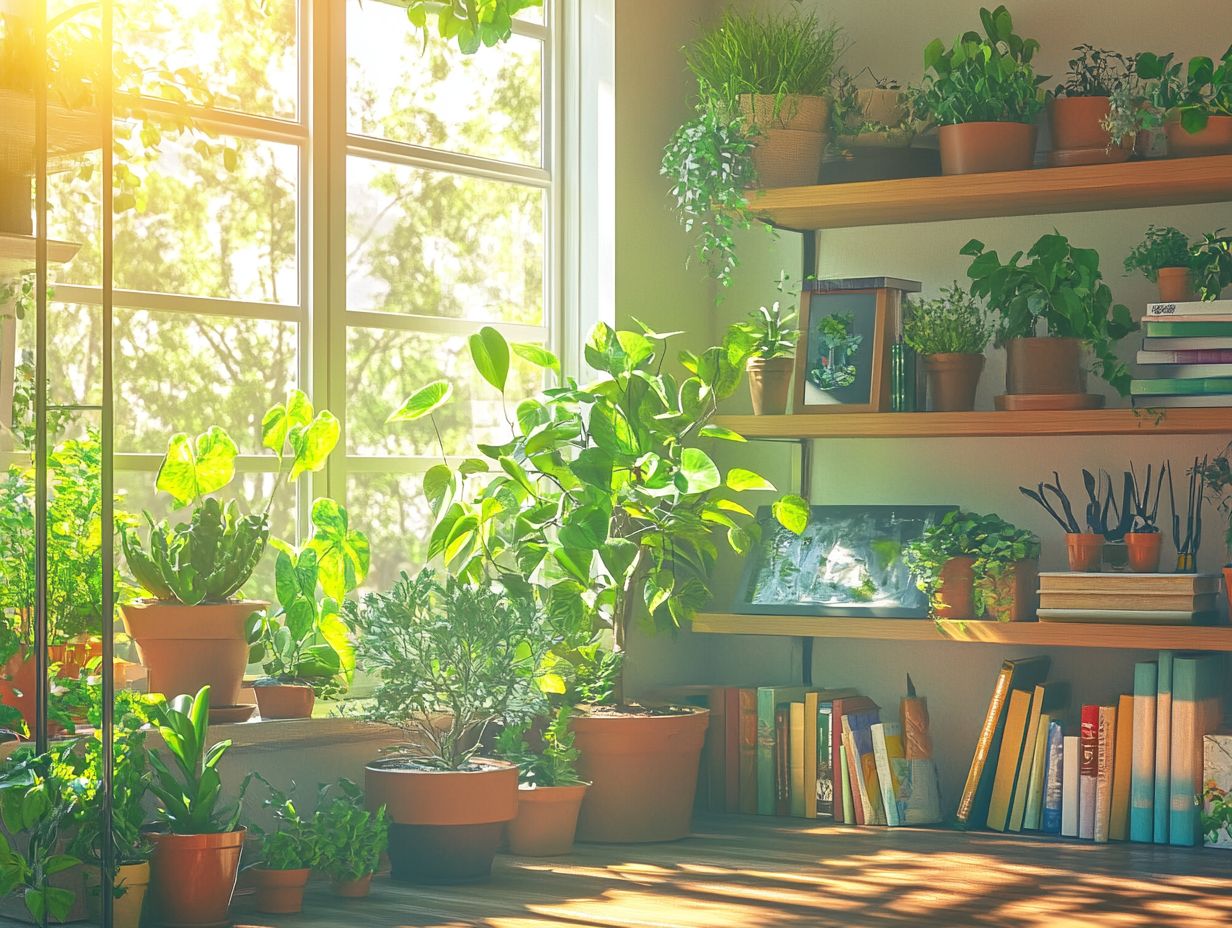
Selecting the right plant species and types is crucial for crafting a flourishing indoor environment that harmonizes with your lifestyle and skill level in plant care.
Understanding the specific light conditions in your home is key, as different plants have distinct light preferences.
If you have a bright, sunny space, various succulent species and cacti will thrive there. Shadier corners could be ideal for ferns and pothos.
By understanding your plants needs, you ll save time and enjoy a thriving green space! Taking maintenance requirements and light exposure into account can save you both time and frustration.
Opting for popular low-maintenance choices like snake plants and ZZ plants means you can enjoy greenery with minimal effort.
To elevate your plant care experience, consider exploring various gardening resources books, online forums, and local workshops can offer you valuable insights and tips to nurture your indoor oasis.
Ideal Conditions for Indoor Plants
Creating the perfect environment for your indoor plants and houseplants requires a keen understanding of their specific needs, including optimal light exposure, temperature preferences, and humidity requirements. By attentively monitoring these factors, you can create a good environment that fosters robust growth and vitality, ensuring proper water drainage and soil moisture.
Fine-tune your watering schedule and maintain appropriate humidity levels. These actions ensure your indoor gardening journey is successful while promoting plant diversity.
Optimal Light and Temperature Levels
Understanding the optimal light and temperature levels and humidity levels for your indoor plants is essential for fostering their growth and sustainability.
Different species come with their own unique preferences that can significantly influence their health. For example, the Spider Plant thrives in bright, indirect light, making it a fantastic choice for those well-lit rooms in your home.
In contrast, the Rubber Plant loves slightly lower light conditions, showcasing its adaptability to various indoor environments.
Both of these plants prefer temperatures between 65 F and 75 F, but don t overlook the importance of humidity. Implementing gardening practices like periodic rotation ensures that every part of the plant gets adequate light exposure, promoting symmetrical growth.
By customizing your care to meet the specific needs of each species, you can cultivate a vibrant and flourishing green space that truly enhances your living environment.
Proper Watering and Fertilization
Proper watering and fertilization are crucial elements of houseplant care that significantly influence their health and growth.
Establishing a consistent watering schedule not only helps you avoid the pitfalls of over or under-watering but also plays a pivotal role in maintaining optimal soil moisture levels, which are vital for root development.
Understanding the specific moisture needs of your plants allows you to provide care that suits their needs, ensuring each type receives the right amount of water based on its individual requirements.
Employing effective fertilizer application techniques can take your plants’ vitality to the next level. By considering factors such as humidity and light exposure, you can fine-tune your fertilization frequency and concentration, promoting robust growth and stunning foliage for the diverse range of houseplant species you may have at home, enhancing your gardening success.
Troubleshooting Common Issues
Troubleshooting the common issues that arise with your indoor plants is essential for maintaining their health and longevity, allowing you to cultivate a flourishing indoor oasis filled with various plant types.
Identifying and Addressing Plant Problems
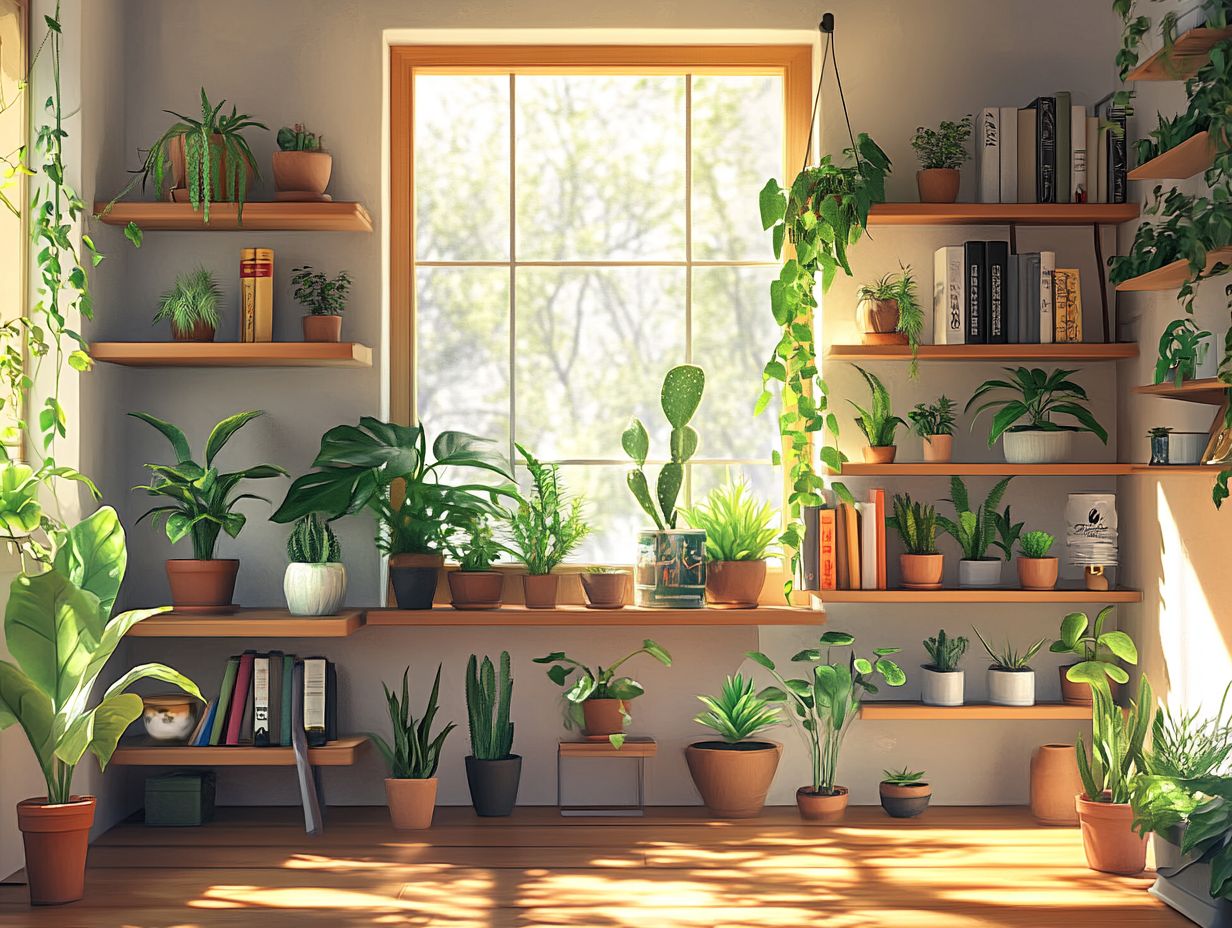
Identifying and addressing plant problems promptly is crucial to keep your indoor plants thriving!
Whether you notice yellowing leaves or an alarming pattern of stunted growth, recognizing these distress signals can significantly enhance the vibrancy of your indoor garden. For instance, yellowing leaves often signify nutrient deficiencies or improper watering. Stunted growth might indicate insufficient light or that your plant is root-bound, meaning it’s outgrowing its pot.
To rectify these issues, reassess your watering schedule. Ensure the soil is neither too dry nor overly moist. Move your plants to brighter areas or upgrade their pot size to promote healthier growth and improve air circulation. Additionally, consider the best light for indoor plants. Watch for pests regularly and apply balanced fertilizers, which provide equal amounts of nutrients for healthy growth.
Maintaining Ideal Conditions
To maintain the perfect conditions for your indoor plants, you must take an active care approach, ensuring they thrive as the seasons shift.
Tips for Sustaining Healthy Indoor Plants
To keep your houseplants thriving, adopting effective plant care tips is vital for their vitality and longevity.
Mastering the art of watering is one of the most critical aspects, as it varies by plant type. Overwatering can lead to root rot, while under-watering results in stress and wilting, negatively affecting plant health. Understanding the ideal temperature range for each species is essential; for more details on this, check out what is the best temperature for indoor plants? Most indoor plants thrive in a stable climate between 65 F and 75 F with optimal humidity levels.
Improving air quality benefits your plants and elevates the ambiance of your space. Ensure proper air circulation, regularly dust the leaves, and use a humidifier to create a healthier atmosphere for your plants.
Frequently Asked Questions
What are the ideal lighting conditions for indoor plants?
Most indoor plants love bright, indirect light. However, some may require more or less light. It’s important to research the specific needs of your plant.
What is the ideal temperature for indoor plants?
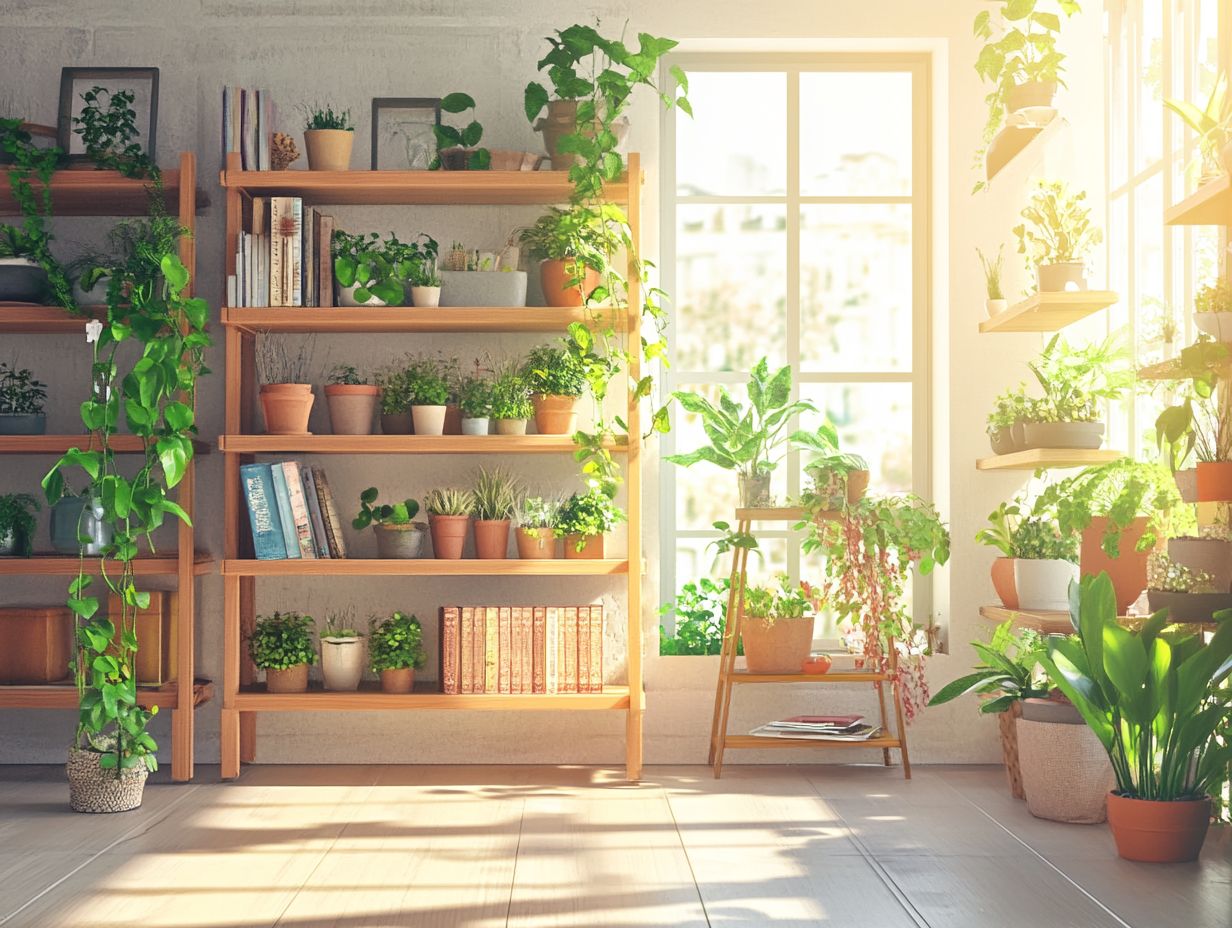
The ideal temperature for indoor plants varies by type. Most prefer temperatures between 65 F and 75 F during the day and 55 F and 65 F at night. Avoid placing plants near drafty windows or heating/cooling vents to prevent extreme temperature fluctuations.
What is the best humidity level for indoor plants?
Most indoor plants prefer moderate to high humidity levels, around 50% to 60%. If your home is dry, consider using a humidifier or grouping your plants together to create a more humid microclimate.
How often should I water my indoor plants?
The frequency of watering depends on factors like plant species, size, and potting mix. Generally, water your plants when the top inch of soil feels dry instead of sticking to a strict schedule. Always check the soil moisture level before watering.
What are the ideal soil conditions for indoor plants?
Ideal soil conditions for indoor plants should be well-draining yet retain moisture. A good potting mix typically contains peat moss, perlite, and vermiculite. Avoid using garden soil, as it may be too heavy and contain pests or diseases.
For more tips or questions about your plants, feel free to explore further or reach out to our community!
What are some signs that my indoor plant may not be in ideal conditions?
If your indoor plant is not thriving, you may see yellowing or dropping leaves. Stunted growth and wilting are also common signs that it needs attention.
Check the lighting. If your plant isn t getting enough light, it may stretch out or produce small, pale leaves.
Always pay attention to your plant’s appearance. Adjust its environment to help it thrive!


